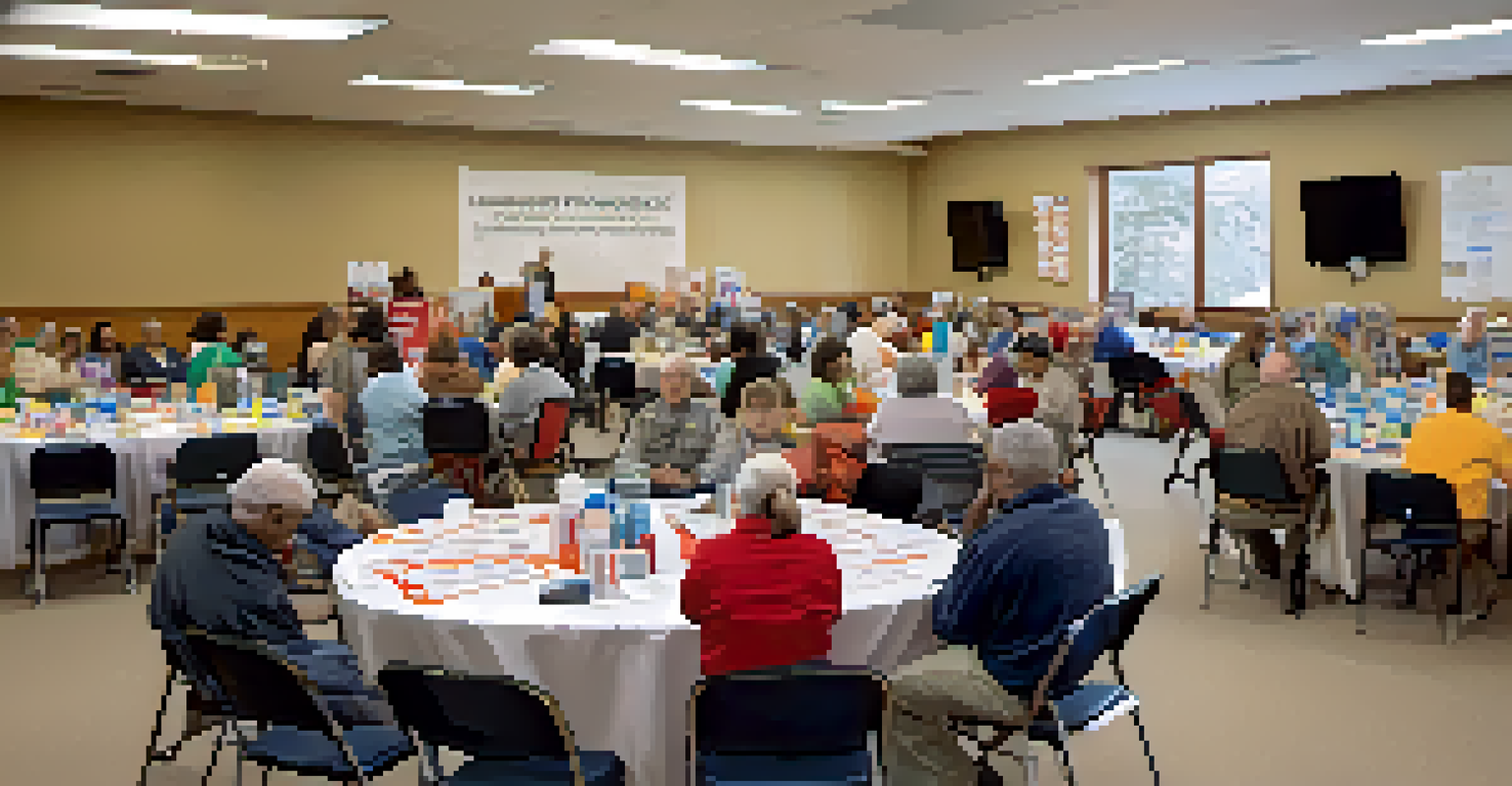The Role of Local Government in Supporting Community Resilience

Understanding Community Resilience and Its Importance
Community resilience refers to the ability of a community to withstand and recover from challenges such as natural disasters, economic downturns, or social upheaval. Imagine a community as a rubber band; the more resilient it is, the better it can stretch without breaking. This concept is crucial because resilient communities can not only bounce back but also grow stronger after facing adversity.
Resilience is more than just the ability to bounce back; it’s the capacity to adapt and grow stronger in the face of adversity.
Local governments play a pivotal role in fostering this resilience by creating policies and programs aimed at preparing for and mitigating the effects of various crises. They serve as a bridge between resources and the community, ensuring that support reaches those who need it most. This relationship is essential, as a community well-prepared for challenges can save lives and reduce long-term recovery costs.
By investing in resilience initiatives, local governments help to empower citizens, enabling them to take an active role in their community's well-being. This collaborative approach is not just about survival; it’s about thriving together, building a sense of unity and shared purpose that can carry the community through tough times.
Local Government's Role in Emergency Preparedness
One of the most critical ways local governments support community resilience is through emergency preparedness initiatives. These programs educate residents on how to respond during disasters, whether it's a flood, earthquake, or public health crisis. Think of it like fire drills in school; they may seem tedious, but they prepare us for the unexpected.

Local governments often conduct training sessions, distribute emergency kits, and develop clear communication strategies to keep the community informed during crises. By having a well-prepared populace, the overall impact of disasters can be significantly reduced. When everyone knows what to do and where to go, chaos can transform into organized action.
Community Resilience Defined
Community resilience is the ability to withstand and recover from challenges, enabling growth and unity after adversity.
Moreover, local governments collaborate with local organizations and volunteers to create emergency response teams. These teams are often the first line of defense during a crisis, providing immediate support and assistance. The synergy between government initiatives and community involvement creates a robust safety net that enhances overall resilience.
Fostering Economic Resilience Through Local Policies
Local governments can also bolster community resilience by implementing economic policies that promote sustainability and diversification. For instance, by supporting small businesses and encouraging local entrepreneurship, communities can create a more stable economic environment. Imagine a garden; a diverse array of plants is less likely to be wiped out by a single pest compared to a monoculture.
A community that is united in purpose is a community that can weather any storm.
In tough economic times, these policies can help communities weather financial storms. When local residents have jobs and businesses that thrive, they are better equipped to face challenges and support one another. Economic resilience is not just about bouncing back; it’s about building a foundation for long-term prosperity.
Additionally, local governments can facilitate access to training and development programs to enhance the skill sets of their workforce. By investing in education and vocational training, communities can adapt to changing job markets and technological advancements, ensuring a brighter future for their residents.
Promoting Social Cohesion and Community Engagement
Social cohesion is vital for community resilience, and local governments can foster this through various engagement initiatives. By organizing community events, workshops, and forums, they create spaces where residents can connect, share experiences, and build trust. Imagine a potluck dinner, where everyone brings a dish; it’s a way to celebrate diversity while fostering unity.
When communities feel connected, they are more likely to support one another during challenging times. Local governments can leverage this bond by encouraging volunteerism and civic participation. Engaged citizens are not only more resilient, but they also contribute to a sense of ownership over their community’s well-being.
Local Government's Key Role
Local governments foster resilience through emergency preparedness initiatives, empowering communities to respond effectively during crises.
Furthermore, social programs aimed at vulnerable populations, such as seniors or low-income families, can strengthen the social fabric. By addressing the needs of all community members, local governments ensure that no one is left behind, creating a more inclusive environment that enhances resilience.
Environmental Sustainability and Resilience Building
Environmental sustainability is a cornerstone of community resilience, and local governments play a key role in promoting eco-friendly practices. Initiatives such as urban green spaces, waste management programs, and renewable energy projects not only benefit the environment but also improve the quality of life for residents. Picture a community garden; it provides food, fosters relationships, and beautifies the neighborhood.
By prioritizing sustainable practices, local governments help communities adapt to environmental changes and reduce vulnerabilities. For example, implementing green infrastructure can mitigate flooding and improve air quality, making communities healthier and more resilient. These initiatives create a win-win situation where both the environment and community thrive.
Moreover, local governments can engage residents in environmental stewardship through education and outreach programs. When community members understand the importance of sustainability, they are more likely to participate in conservation efforts, leading to a more resilient ecosystem that supports the community's needs.
Creating Supportive Policies for Mental Health and Well-being
Mental health is an often-overlooked aspect of community resilience, and local governments can make strides in this area through supportive policies. By providing access to mental health resources and promoting awareness campaigns, they help create a culture that values psychological well-being. Think of it like a support group; having a safe space to share feelings can significantly impact individual resilience.
Local governments can partner with healthcare providers to ensure residents have access to mental health services, especially during crises. By prioritizing mental health, communities can better cope with stress and trauma, ultimately leading to stronger resilience. After all, a healthy mind is just as important as a healthy body in facing life’s challenges.
Economic and Social Cohesion
Supporting local economies and promoting social engagement are vital for building a resilient community that thrives together.
Moreover, investing in community programs that promote social interaction, such as recreational activities and arts initiatives, can also contribute to mental well-being. When people feel connected and engaged, they are more likely to support one another, creating a resilient community that thrives together.
The Future: Innovative Approaches to Community Resilience
As challenges evolve, so too must the strategies employed by local governments to support community resilience. Innovative approaches, such as leveraging technology and data analytics, are becoming essential in understanding and addressing community needs. Picture a community app that keeps residents informed about resources, events, and emergency updates; it enhances engagement and preparedness.
Local governments can also explore partnerships with tech companies to develop tools that facilitate communication and resource sharing among community members. By harnessing technology, they can create more efficient systems for disaster response and recovery. This forward-thinking mindset can significantly enhance a community's resilience.

Additionally, embracing a collaborative approach that includes input from residents can lead to more effective policies and programs. When local governments actively listen to the needs and ideas of their communities, they can tailor initiatives that resonate and foster greater participation. This inclusive strategy not only strengthens resilience but also builds trust between the government and its constituents.